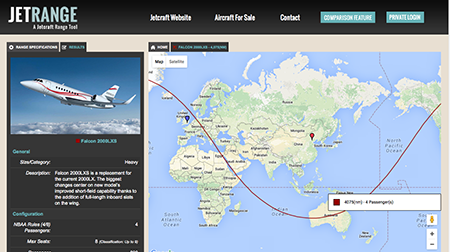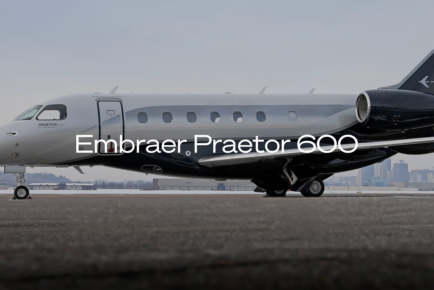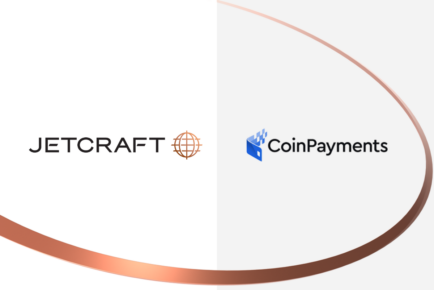
Written by Scott Plumb, Jetcraft’s former Senior Vice President of Sales
You have chartered several times, and you enjoy the flexibility that private aviation offers; the ability to travel productively and safely with colleagues and family, and still make it back to the office or home with time to spare. You are ready to consider the next step in private aviation – aircraft ownership.
Years ago, the trading of private aircraft was as simple as buying any other high-value asset, but in today’s more complicated world of licencing, tax credits and legal regulations, merely contemplating this particular multi-million dollar purchase can be slightly nerve-wracking. Many first-time buyers are intimated at the thought of such as large investment, with risk mitigation at the forefront. And once your decision is made, how does one go about taking ownership of an aircraft? Here is a walkthrough of the acquisition process.
The first step begins with a series of face-to-face meetings. At this stage it will be important for Jetcraft to know and understand your perspectives on the purchase, the intended capabilities of an aircraft and how you wish to put your aircraft to work for you. During this initial phase, here are the types of topics we will cover relating to how you plan to use the aircraft (typical mission profiles):
- Your departure points
- Most frequently visited destinations. For example, the type of aircraft suited for flights to high-trafficked, urban centers will be different from an aircraft that will fly frequently to more remote destinations (the latter may need to be more robust, depending on conditions on the ground)
- Whether there will be international travel requirements
- Typical number of passengers (colleagues, clients, family members, etc.) you plan to transport
- Your needs in the air for connectivity, comfort and productivity. For example, if you need to conduct in-person or remote (SatCom) meetings on board
Naturally, these mission profiles and priorities need to be balanced against budget questions:
- Should you purchase new or pre-owned? Newer pre-owned aircraft have higher purchase prices but lower operating costs as the aircraft may still be on warranty, while older aircraft have lower ownership costs and higher operating costs. Putting too much emphasis on purchase price can lead to a potentially disappointing outcome.
- How long do you plan on owning your plane?
- How do you plan on financing? There are several financing structures that now include operating leases, as well as the traditional finance leases.
- What are the tax ramifications to owning an aircraft? Where should you register the aircraft?
- Who should manage your aircraft, or should you start up your own flight department?
Once we have a sense for your mission profiles and budget, we can move to the second step of the process.
Generally, Jetcraft will offer a few types of aircraft that meet your criteria and fall within your initial cost and operating budgets. Prices and operating costs will vary greatly depending on type, size and age of the model. Based on your budget and typical missions, we suggest a selection of aircraft classes by range and/or capabilities (such as light jet, long-range jet, ultra-long range, etc.) and manufacturer type (Cessna, Bombardier, Dassault, Gulfstream, Embraer, etc.). Tools such as our interactive JetRange map (pictured) are useful at this phase.
We do our best to narrow the range of options as much as possible to fit both your typical mission profile and your budget. This phase generally involves some discussion about what are the “must-haves” for your aircraft versus the “nice-to-haves.” It should be noted that a common mistake for first time aircraft buyers is over-buying. You should be buying an aircraft for your everyday missions, not for the once a year flight across an ocean to visit a customer.
The Letter of Intent Phase
Once a specific aircraft type and serial number (for an individual aircraft) are selected, Jetcraft will help draft a letter of intent to make an offer on the candidate aircraft. This letter of intent (LOI) is a non-binding contractual document that spells out the basic terms and conditions of the offer. To give the LOI offer credibility, a fully refundable deposit is also included and paid into a third-party escrow agent in this step. Pre-owned aircraft are normally purchased in an “As-Is, Where Is” condition, meaning the buyer’s purchase is predicated on no physical modifications being made to the aircraft. The buyer will create a set of conditions for the aircraft and the seller to comply with in order for the buyer to accept the aircraft. Typically these include no damage history, a complete and current set of log books, and the stipulation that the aircraft will be delivered in “airworthy condition” with all maintenance current and completed. Once this LOI is accepted by the seller, you are ready to move on to the third step of the process.
The Purchase Agreement Phase
Once the LOI is signed and a refundable deposit made, the buyer will conduct a visual inspection of the aircraft. This visual inspection is to ensure that the aircraft meets the specifications and basic requirements of the LOI. Following acceptance of this visual inspection, the buyer and seller move to the Purchase Agreement phase, which can take a couple of weeks to complete. One party takes the responsibility of drafting the purchase agreement, and these drafts are exchanged until the terms and conditions are mutually acceptable. The actual purchase agreement should be a very straightforward document that maps out the obligations of the buyer and the seller, the timelines to closing and the “exit ramps” in the event that the transaction doesn’t progress as contemplated.
Closely following the signing of the purchase agreement, the aircraft is moved to a pre-purchase inspection facility where the aircraft is put through a rigorous pre-purchase inspection. Typically, the buyer selects the inspection facility. Depending on factors such as aircraft age, history and maintenance record of the aircraft, the inspection can take anywhere from 10-20 working days. At the conclusion of the inspection, both the buyer and seller receive an inspection report. The buyer has the right to accept the aircraft either without condition or, more likely, conditionally upon the seller’s correction of any airworthiness discrepancies that are discovered during the inspection. The seller will authorize the inspection facility to correct the discrepancies at the seller’s expense. When these repairs are made and the condition of the aircraft meets the conditions of the purchase agreement, the aircraft is Returned to Service. Then it is time to move on to the fourth and final step of the purchase.
Closing Call
The closing call is the final stage of the deal. The escrow agent, as an independent party to the transaction, hosts the closing call. On this call, the buyer and seller confirm that all the preceding conditions agreed to in the purchase agreement have been met and that closing can occur. Closing is a series of synchronized steps in which payments are made, liens are released, de-registration and re-registration are accomplished, and warranty bills of sale and titles are exchanged from the seller to the buyer.
At this stage congratulations are in order, as you are now the proud owner of your very first aircraft.
SIGN UP FOR OUR MONTHLY JETSTREAM RECAP
Don't miss future Jetstream articles. Sign up for our Jetcraft News mailing list to receive a monthly eblast with links to our latest articles. Click to join the 1,800+ subscribers on our mailing list.






